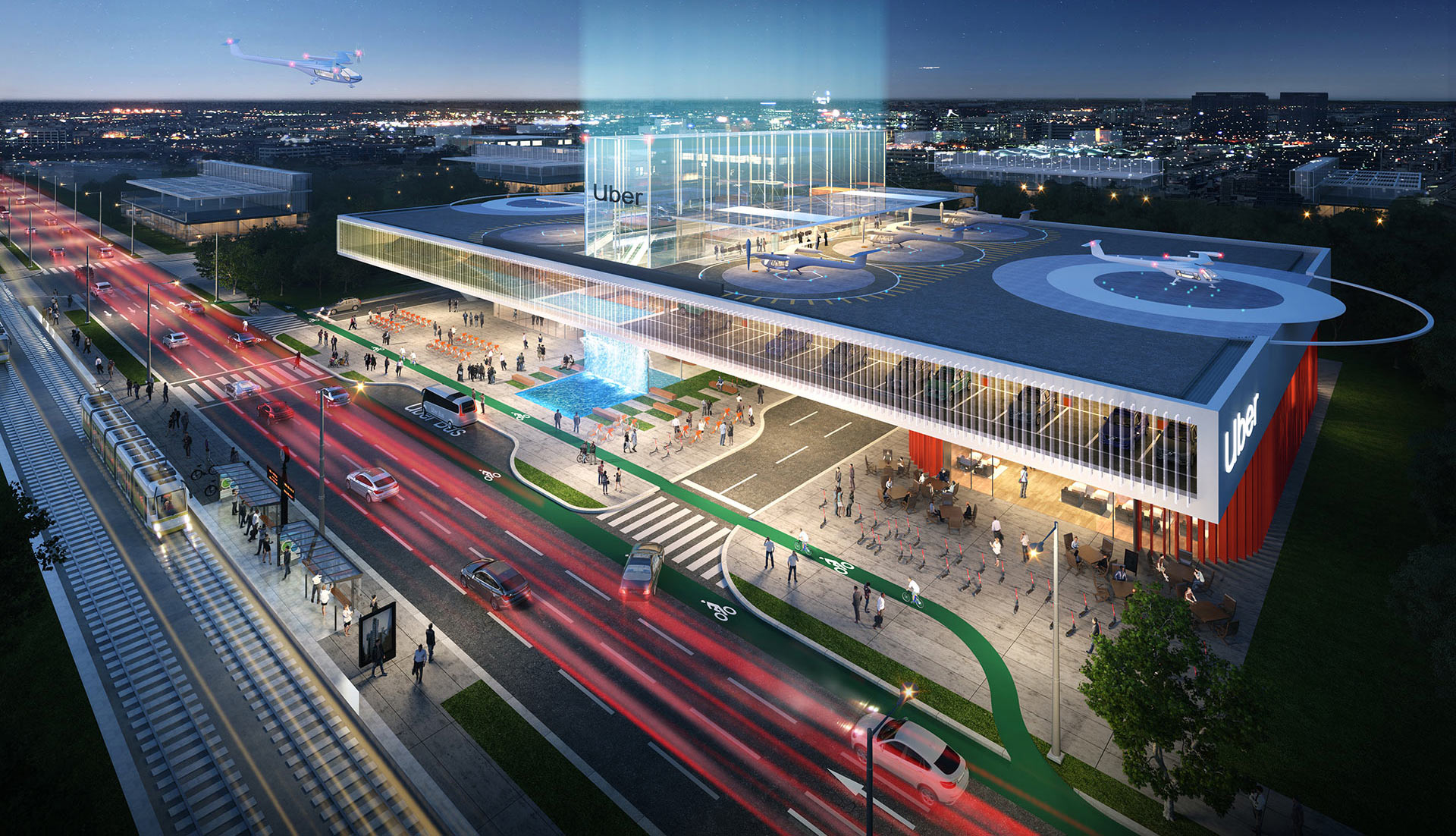Uber unveils new skyport designs for Uber Air
06/11/19
Uber’s architecture and engineering partners have unveiled some new skyport designs. To be clear, skyports are the areas where people will be able to board and disembark from Uber Air vehicles.
At Uber Elevate today, eight firms unveiled 16 new designs for skyports. Below, you’ll find the top concept from each of them. You may be wondering where you’ll find these skyports. Well, Uber envisions working with real estate developers and cities to install skyports on top of parking garages and other underutilized structures.
“With the first launch of Uber Air just a few short years away, this collection of Skyport Mobility Hub concepts establish a practical, sustainable vision for the infrastructure needed in the communities we plan to serve,” Uber Elevate Head of Design for Elevate John Badalamenti said in a statement. “These designs represent a synergy of purpose, orchestrating a seamless transition between ground transit like Uber Pool and eVTOL aircraft on the roof tarmac – all while contributing to the surrounding neighborhood. Architectural minds carry the responsibility to imagine the world in a way that does not exist yet and make it a reality. So this year, we invited innovative architectural firms to imagine how connected Skyport hubs could be integrated into the urban landscape of Los Angeles, Dallas and Melbourne.”

Humphreys & Partners Architects envisions a Dallas-based skyport that looks like it’s expended in the air. It’s designed to support eVTOLs, micromobility and retail operations with more than 9,500 square feet.
“Our approach in designing an on-demand aerial ridesharing terminal is based on the idea that ‘less is more,’ ” Humphrey & Partners CIO Walter Hughes said in a statement. “This idea has motivated us to create a highly intuitive experience for passengers, integrated within a structure that is simple to build and operate while reinforcing Uber’s brand identity. Volary is inclusive of new technologies and made of natural, organic materials for a highly sustainable building resulting in a zero net energy footprint.”
Click the link below to read the full publication.
Read Publication
